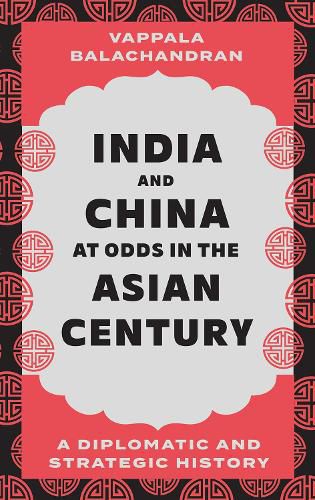Readings Newsletter
Become a Readings Member to make your shopping experience even easier.
Sign in or sign up for free!
You’re not far away from qualifying for FREE standard shipping within Australia
You’ve qualified for FREE standard shipping within Australia
The cart is loading…






The term 'Asian century' was first coined by the US Senate Foreign Relations Committee in 1985 when discussing the Asian economic leap forward. From 1988, diplomats and the media also started using the term, further to the successful Deng Xiaoping-Rajiv Gandhi summit held that December in Beijing, for which Vappala Balachandran, under Prime Minister Gandhi's express directions, led a small team of officials for more than a year of discreet 'off-line' talks with key Chinese counterparts separate from the official diplomatic engagement.
The Chinese-Indian thaw, which lasted until 1998, prompted highly optimistic visions of a 'China-India Century of Cooperation' enabling both powers to compete with the US and EU in terms of trade and military capacity. None of this happened, and instead the China-India relationship is highly rancorous, punctuated by trade spats and border skirmishing between the People's Liberation Army and the Indian Army. New Delhi has gravitated towards the US in the hope of checkmating an assertive Beijing's pursuit of global military and trade dominance. This book offers a comprehensive analysis of India and China's comparative strategic capabilities, sharing many insights drawn from the author's first-hand engagement with and research into the questions discussed.
The opinions expressed in this book are personal and do not represent those of the Government of India.
$9.00 standard shipping within Australia
FREE standard shipping within Australia for orders over $100.00
Express & International shipping calculated at checkout
The term 'Asian century' was first coined by the US Senate Foreign Relations Committee in 1985 when discussing the Asian economic leap forward. From 1988, diplomats and the media also started using the term, further to the successful Deng Xiaoping-Rajiv Gandhi summit held that December in Beijing, for which Vappala Balachandran, under Prime Minister Gandhi's express directions, led a small team of officials for more than a year of discreet 'off-line' talks with key Chinese counterparts separate from the official diplomatic engagement.
The Chinese-Indian thaw, which lasted until 1998, prompted highly optimistic visions of a 'China-India Century of Cooperation' enabling both powers to compete with the US and EU in terms of trade and military capacity. None of this happened, and instead the China-India relationship is highly rancorous, punctuated by trade spats and border skirmishing between the People's Liberation Army and the Indian Army. New Delhi has gravitated towards the US in the hope of checkmating an assertive Beijing's pursuit of global military and trade dominance. This book offers a comprehensive analysis of India and China's comparative strategic capabilities, sharing many insights drawn from the author's first-hand engagement with and research into the questions discussed.
The opinions expressed in this book are personal and do not represent those of the Government of India.